The Dinosaurs Found in Jurassic World: Camp Cretaceous
With the rousing success of Jurassic Park’s latest entries, Jurassic World and Fallen Kingdom, Universal Studios became determined to turn the franchise into a multimedia success. So, they increased the support for books, toys, and video games. Moreover, they strongly believed that Jurassic World could become a powerhouse as an animated series.
By 2019, fans began circulating rumors that Universal Studios had partnered with DreamWorks Animation to create an animated series. The very concept of a Jurassic Park animated series floated around with the success of the first film. At the time, Steven Spielberg pushed Universal to create an animated series. However, the only remnants that testified to these attempts were the Chaos Theory toys.
On the contrary, the rumors led to the announcement of Jurassic World: Camp Cretaceous, which arrived on Netflix’s streaming service in 2020. Keeping the new series in line with the films, Steven Spielberg, Colin Trevorrow, and others from the films joined the team as executive producers. Meanwhile, Scott Kreamer and Aaron Hammersley united as the showrunners for the series. They all agreed that the show should keep the tension and danger present in the films.
As Jurassic World: Camp Cretaceous finally appeared on streaming services, Jurassic Park fans flocked to enjoy the show. Rather than picking off where Fallen Kingdom had left off, Camp Cretaceous told a side story that moved parallel with the first film. Thus, fans could see the events of Jurassic World from a new angle. As the seasons continued, the series moved to showcase the events of Fallen Kingdom’s opening as well.
Which dinosaurs have appeared in Jurassic World: Camp Cretaceous?
One thing that all Jurassic Park fans love to see is the dinosaurs of the park. Even though the dream of reviving dinosaurs from the scant samples of DNA is currently implausible, people still love the thought of walking with dinosaurs. So, these creatures have become the star attraction of the Jurassic Park franchise.
Camp Cretaceous offers a wide array of dinosaurs for fans to indulge in. Several of these creatures appear for brief scenes. So, we will only be presenting the dinosaurs that have left the largest impact on the series and franchise.
Ankylosaurus
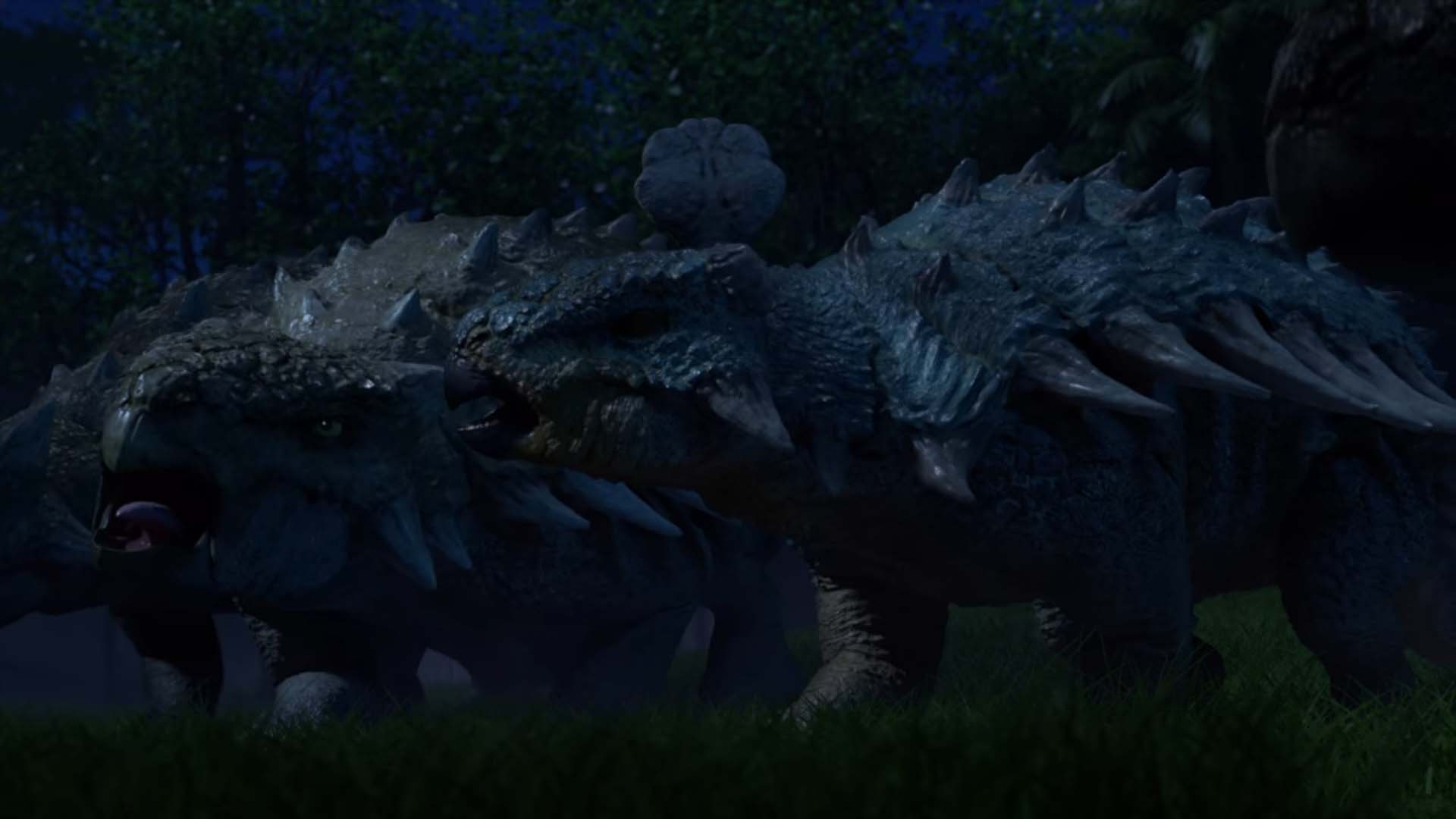
Discovered in 1908, Ankylosaurus has fascinated dinosaur fans across the world with its series of armored plates. Thanks to the way fossils arrange post-mortem, scientists have debated the exact placement of these plates over the years. However, the public has often seen this animal with the plates running parallel along its back, almost giving it an armored shell. Meanwhile, the armor also ended with a series of large spikes along the sides of this animal. This image became most popular thanks to the reconstruction that appeared in the 1964 World’s Fair.
Despite the overwhelming popularity of this dinosaur, the Ankylosaurus did not appear in the Jurassic Park franchise until Jurassic Park III. Even then, the animal only appeared for a short cameo. This dinosaur returned with a much larger impact for Jurassic World. In that film, two of the main characters, Zack and Gray, had a close encounter with the species as they snuck past the perimeter fences. They also had the misfortune of witnessing the Indominus Rex attack and kill one of these creatures.
Receiving the largest role to date, the Ankylosaurus prominently appeared in Camp Cretaceous. In this animated show, one of the clones was born with a small asymmetry, giving it a larger bump on the right side of its head. Thus, the Campers came to affectionately call this creature Bumpy. Bumpy imprinted itself on one of these campers, Ben, and followed him for the first three seasons of the series.
Baryonyx

After a lucky find by an amateur fossil collector, William J. Walker, the first samples of Baryonyx fossils originated from the Smokejacks Pit in 1983. The National History Museum of London soon determined that these samples were from a newly discovered species, so they returned to the pit to unearth the full skeleton. Their excavation unearthed a nearly 65 percent complete skeleton, permitting scientists to give the species a name in 1986, Baryonyx.
As a species that was discovered relatively recently, few movies or media have introduced the public to this carnivorous dinosaur. Moreover, its larger cousin, the Spinosaurus, stood out much more with the large sail on its back. However, that all changed when Jurassic World: Fallen Kingdom came out.
For the first time, a Baryonyx appeared in the Jurassic Park franchise as Isla Sorna was facing destruction. As Claire Dearing and Franklin Webb made their way through Jurassic World’s maintenance tunnels, they found themselves face to face with a Baryonyx. Somehow, this creature’s hunger overwhelmed its sense of danger, as it came dangerously close to lava to attack the pair.
The Baryonyx appeared in full force during the events of Camp Cretaceous. In the series, a trio of Baryonyx, Grim, Chaos, and Limbo, terrorized the island during Season 2. While Brooklyn, Darius, and Sammy first discovered one of these creatures locked up at a medical station. Later, Mitch and Tiff slew one of the trio, Grim, before the remaining two tracked down and slew the hunters.
Brachiosaurus
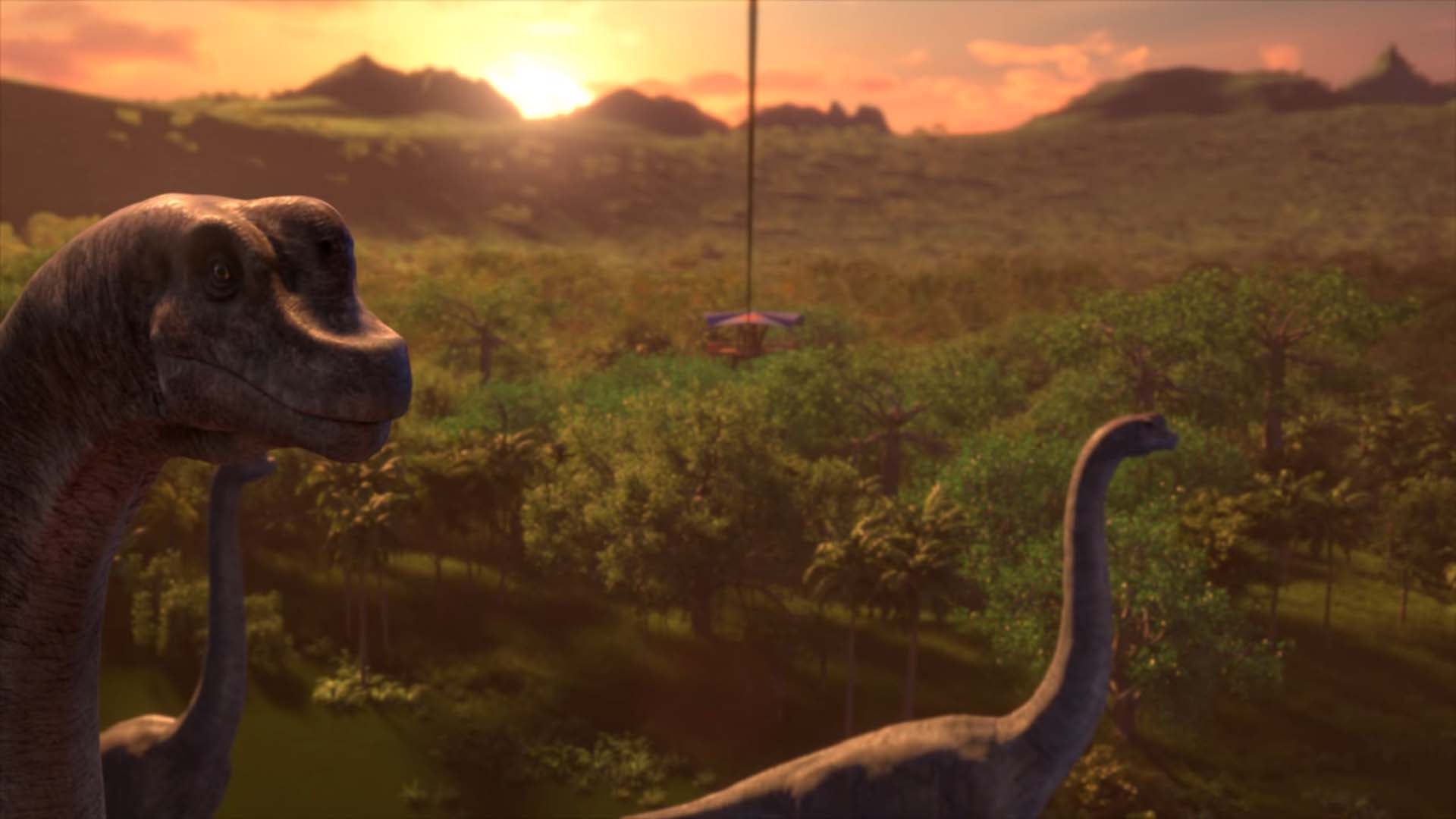
Earning its official name in 1903, Brachiosaurus has become one of the most popular dinosaurs across the world. This tall, long-necked sauropod became the main representation for the species in several media. While debates have raged over the posture of this creature’s neck. While some scientists have argued that the species could not possibly survive with their heads held up high like a giraffe, the most popular visual and belief features members of this species with upright necks.
Testifying to the popularity of the Brachiosaurus, the first dinosaur that Allan Grant saw in Jurassic Park was one of these massive herbivores. They became enamored by the creature’s size and majesty as it rose onto its back legs to eat leaves high up in the trees. Even as Allan, Lex, and Tim navigated their way through Jurassic Park’s jungle, they admired the gentle nature of these giants. Thus, the Brachiosaurus became a mainstay of the franchise.
The species continued to appear in multiple films, often grazing in herds. Not until Fallen Kingdom did this species have another significant appearance. In that film, a Brachiosaurus stood on the docks as the volcanic eruption annihilated Isla Sorna. This creature reared up in the same position that greeted visitors to Jurassic Park back in the first movie. Unfortunately, it likely died as the volcanic ash consumed it.
Once again, Brachiosaurus appeared in Camp Cretaceous, moving in herds along with other herbivores. This species was amongst the first species that the campers spotted as they zip-lined to their lodgings.
Carnotaurus

As Paleontologist José Bonaparte undertook an expedition around 1984, he unearthed the only skeleton of the creature now known as Carnotaurus. This unique specimen had impressions of its skin preserved, though the hind legs and tail had weathered away. As they identified this skeleton as a new species, the Carnotaurus became known to the public by 1985.
Distinguishing this animal, the Carnotaurus featured two prominent horns over its eye ridges. While time preserved the bones that supported these horns on the skull, Bonaparte believed that they would have had longer keratinous sheaths. While other scientists have agreed with this belief, the consensus is that the horns were not much longer than the bone supports.
Dinosaur fans became ecstatic when a Carnotaurus finally appeared on the silver screen during the events of Jurassic World: Fallen Kingdom. Unfortunately, this carnivore only appeared briefly as Owen Brady, Claire Dearing, and Franklin Webb attempted to escape the eruption. This creature circled the Gyrosphere before he began fighting with a Sinoceratops. Later, another Carnotaurus happily shared the Eli Mills meal with a Tyrannosaurus Rex.
Understanding the appeal of this dinosaur, Camp Cretaceous placed a Carnotaurus front and center in a starring role during the first season. Jurassic World officials labeled this creature, which the campers nicknamed Toro, as too dangerous to be displayed to the public. So, its enclosure was away from the main park. After it escaped, it often crossed paths with the campers, chasing them around the park.
Compsognathus
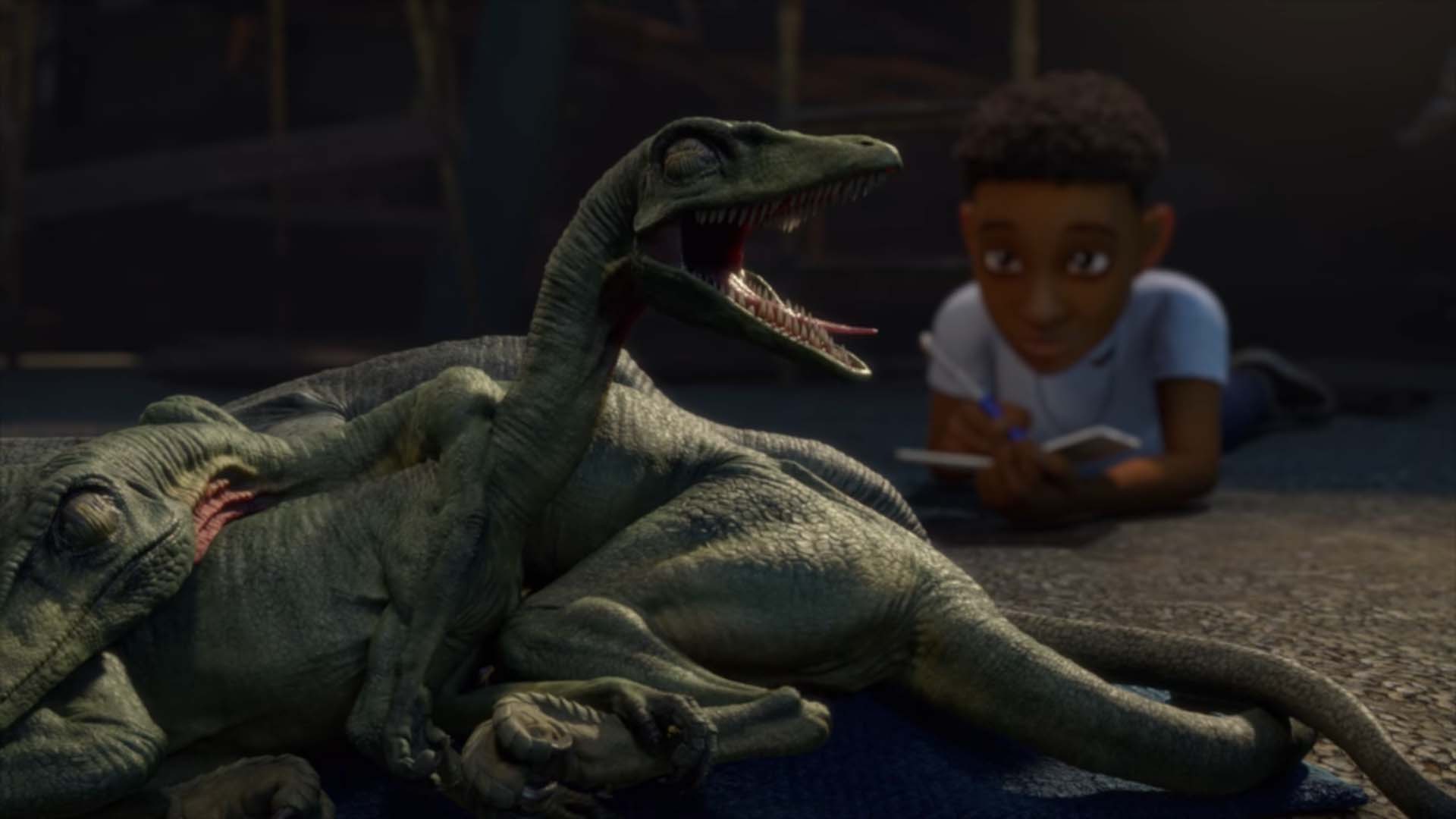
Many dinosaurs were not the titanic thunder lizards that people of the 1800s dreamed of. For instance, the Compsognathus, officially named in 1859, only stood at about twenty-one centimeters tall with about a meter in length. Given the misconceptions of the early years of paleontology, one of the first scientists to study a sample from Bavaria, Johann A. Wagner, did not even recognize the species as a dinosaur. However, these small creatures were indeed dinosaurs.
Due to its diminutive size, the public often overlooked the Compsognathus, even though most heard the name. Older dinosaur movies preferred to feature creatures that towered over their actors. So, this creature barely showed up in popular culture.
However, when Jurassic Park: The Lost World hit theaters, the Compsognathus made a massive impact on the film. Not only did these small creatures swarm on a small child, maiming her, they also killed a member of InGen’s expedition after he separated from the group. While these creatures posed no threat to humans on their own, they moved in large packs which could easily overtake pray much larger than them.
Notably, the Compsognathus played an influential role in Michael Crichton’s book, when they swarmed the park’s owner, John Hammond. Unlike the one that moviegoers know, this John Hammond only cared for making money from the Park and did not even care for the wellbeing of his grandchildren. As he strolled around the park to worry over the state of the park, the roar of a Tyrannosaur spooked him, leading to him tumbling off a steep slope and breaking his ankle. Soon after, a swarm of Compsognathus picked him off, ending his life.
Indominus Rex

Unlike most other dinosaurs in Jurassic World’s exhibits, the planned Indominus Rex attraction would feature a never-before-seen creature. To achieve this feat, the Masrani Global Corporation pushed for its head scientist, Doctor Henry Wu, to begin splicing together genetic samples to create a viable specimen. During this process, Henry Wu created several prototypes that had to be terminated or kept in cold storage. However, he finally created a workable creature once he produced the Indominus Rex.
This large predator held pieces of genetic code from multiple species, both extinct and currently alive. Its genetic cocktail included Velociraptor, Carnotaurus, Majungasaurus, Tyrannosaurus Rex, and many more therapods. Meanwhile, it also had DNA donated to it from cuttlefish, pit vipers, and the ever-present tree-frog, which made all Jurassic Park dinosaurs possible.
While the Indominus Rex was stable enough for Jurassic World staff to plan an attraction around it, it also lacked any social structure or understanding. This intelligent creature also tested the defenses of its enclosure, clawing at the concrete, in its escape attempts. Whether from lack of communication or unfamiliarity with the species, handlers around this creature’s pen did not know its most dangerous aspect, that it could camouflage. Thus, they created an escape route for the camouflaged titan as it deceived them into thinking it had escaped.
Once freed, the Indominus Rex rampaged through Jurassic World, breaking through multiple enclosures, and forcing an evacuation. This dinosaur also chased the campers as they tried to make their way to one of the evacuation points.
Mosasaurus
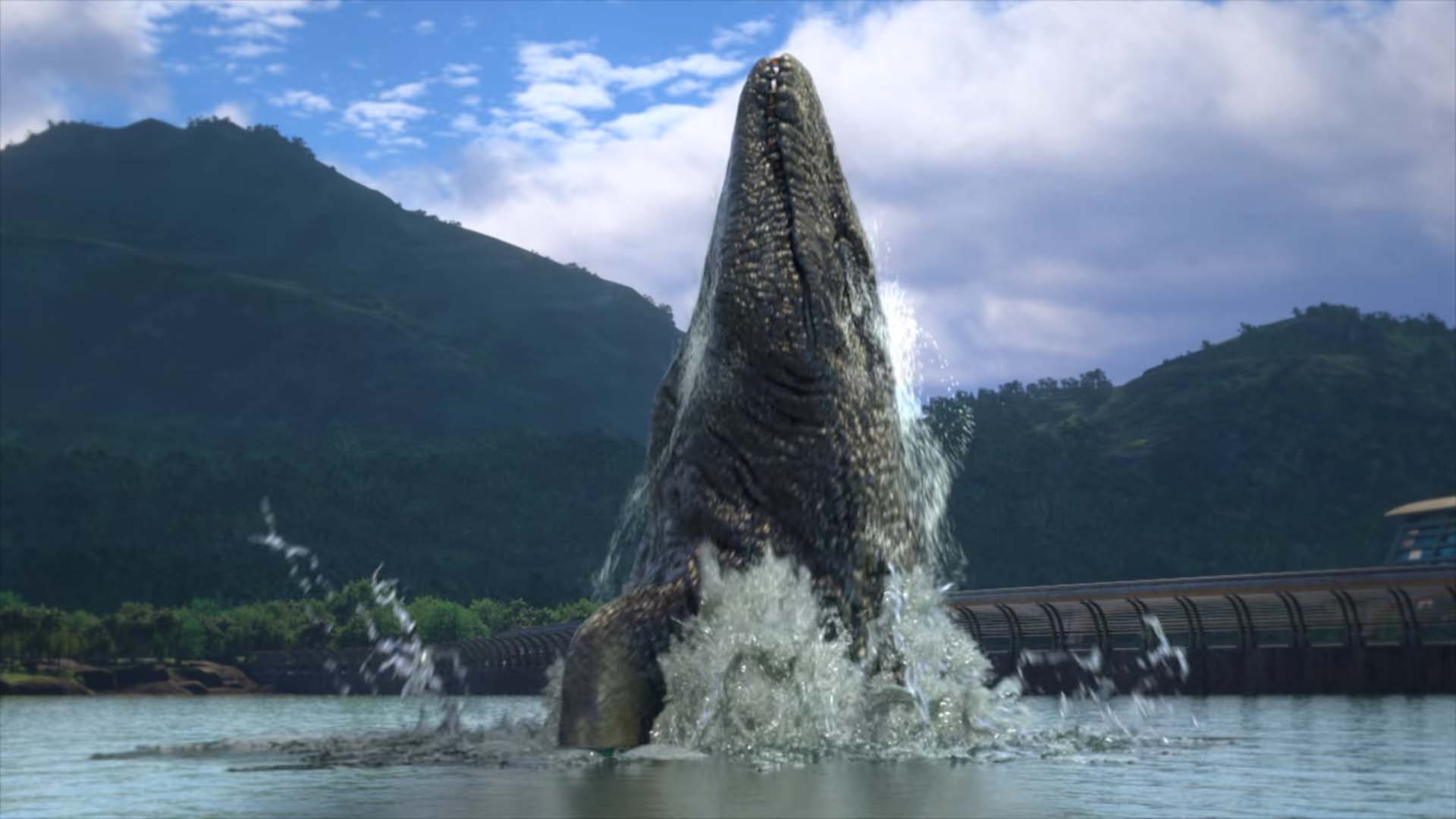
While people found the first examples of a Mosasaurus fossil back in 1764, the species did not earn its name until 1829. Some of the earliest examples of Mosasaurus skulls were initially believed to belong to whales or crocodiles. However, as scientists got their hands on the second skull, found in Maastricht, they determined that the fossils belong to a long-extinct marine lizard. The identification of this fossil helped lead people into understanding that there were species in the past that went extinct and no longer exist today.
While early depictions of the Mosasaurus mistakenly believed that the species could go on land. However, scientists now all agree that this species was completely aquatic, unable to transverse on land.
Despite being one of the earliest known examples of dinosaurs, the Mosasaurs did not appear in any media until Jurassic World hit theaters in 2015. Exciting moviegoers, the Mosasaurs loudly announced its presence early in the film, when it launched out of the water to chow down on a Great White Shark. Later, the Mosasaurus briefly breached its lagoon to quickly snag the Indominus Rex before it dragged it into the water.
With the Mosasaurus becoming one of the defining features of the Jurassic World films, the creature continued to make appearances in the sequel and Camp Cretaceous. During the events of the first season, the Mosasaurus still dwelled in its lagoon, which the campers paddled into as they tried to find a way off the island. As they ran for their lives, Yasmina latched onto the wire that delivered this creature’s shark meals. Even though she escaped the jaws of the Mosasaurus, her landing from the broken wire broke her ankle.
Parasaurolophus
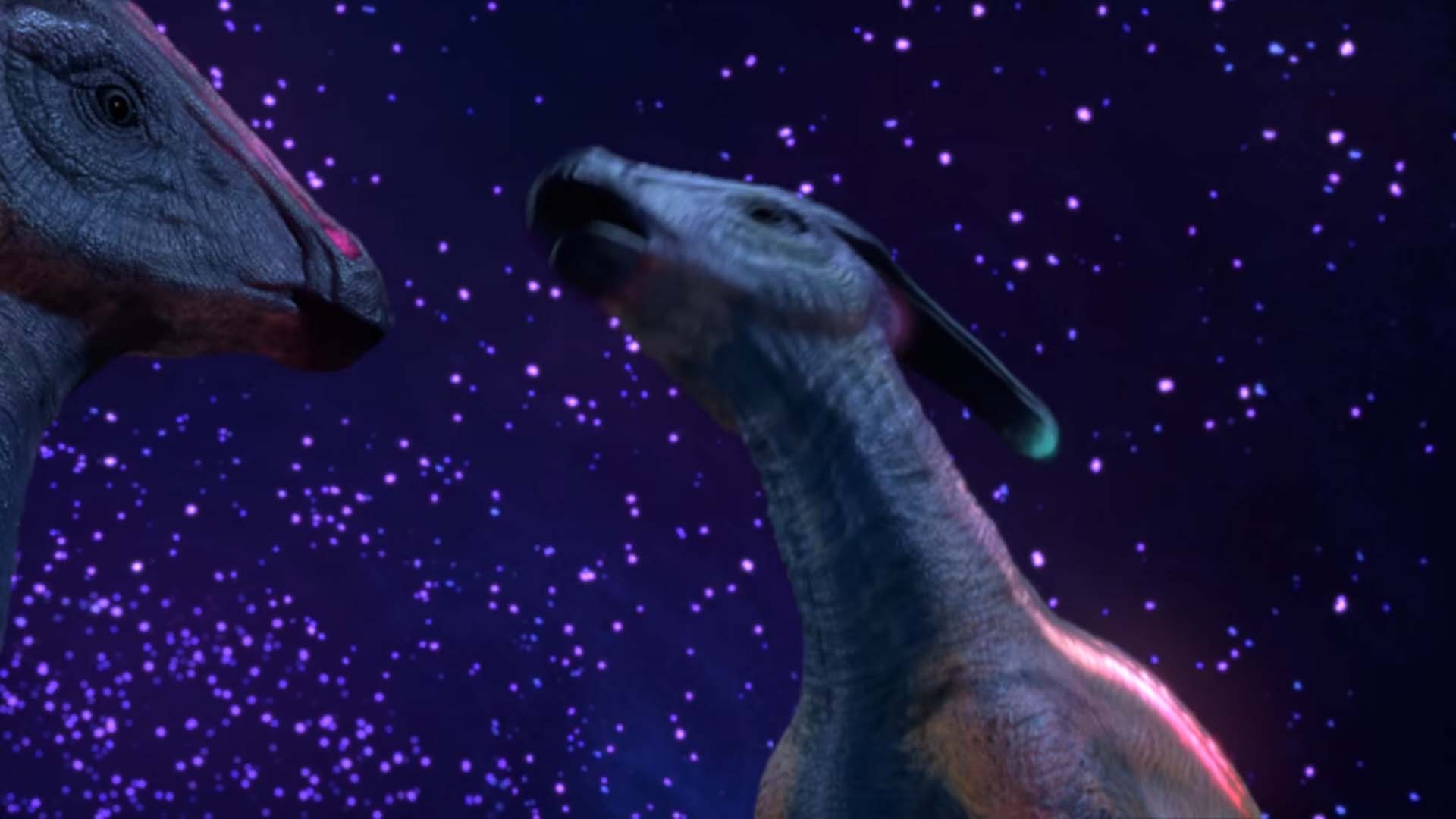
First discovered in 1920, a field team from the University of Toronto found a near-complete skeleton of the Parasaurolophus near Alberta, Canada. While this skeleton lacked large sections of the body, such as most of its tail, its distinctive crested head was on full display. Since the crest made this dinosaur stand out, it became one of the preferred creatures to represent the various duck-billed species in media.
Following the general popularity of this creature, Jurassic Park featured several examples of Parasaurolophus starting with the first film. As Allan Grant and the other visitors arrived on Park grounds, they first saw a Brachiosaurus followed by several other grazing dinosaurs, including the Parasaurolophus. Later in this film, depictions of these creatures also appeared on the walls adorning the Visitor Center’s dining area.
The species continued to exist in the franchise, appearing from time to time as part of herbivore packs. However, one of its largest roles occurred outside of the films. For the storyline of Universal Studios’ Jurassic Park: The Ride, one of these dinosaurs popped out of the water, sending the tour boat off course into danger.
This all changed in Camp Cretaceous, where these dinosaurs played a significant role as the campers traveled through an underground river to get to the main park. While underground, they spotted a pair of Parasaurolophus that Park staff had modified with bioluminescent genes. As they marveled at the beauty of these creatures, the pair of dinosaurs defended their territory by attacking the boats.
Scorpios Rex
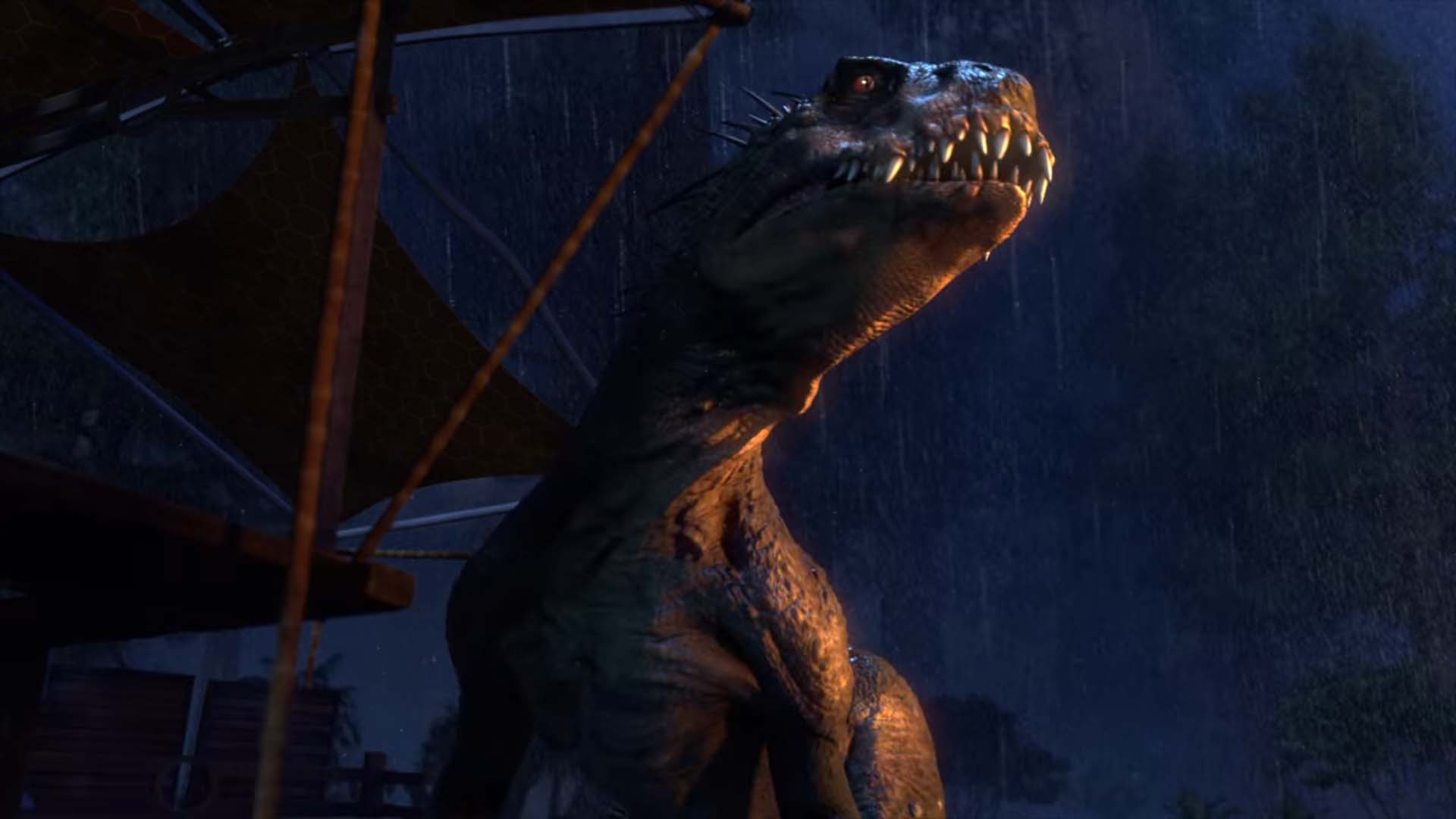
Before Dr. Henry Wu succeeded at producing the Indominus Rex, he created several other hybrid creatures. Seeing that the Park’s attendance was stagnating, Simon Masrani firmly believed that the people were becoming bored of simple dinosaurs. So, he ordered the genetics staff to create a brand-new dinosaur hybrid that would generate excitement for the park. Unbeknownst to Masrani, Dr. Wu also worked together with Vic Hoskins to specifically cultivate new hybrids that would become bioweapons.
Intending to create deadly creatures, Henry Wu purposely created dinosaurs that would be ferocious. However, he quickly discovered that there was a fine line between a ferocious monster and a viable weapon.
One of the first products of his hybrid project was the Scorpios Rex. Even before this medium-sized new theropod caused any trouble, Simon Masrani already decided that the creature was too grotesque to appear as an attraction. As Dr. Wu bemoaned Masrani’s lack of appreciation, the Scorpios Rex attacked him, poisoning him with one of its barbs. Thus, the staff terminated the Scorpios Rex project and stored the hybrid in a cryogenic chamber.
After the park broke down, the power to the Scorpios Rex’s containment unit failed, releasing the creature. After months alone on the island, the campers found themselves facing off against not just one, but two of these creatures. Intentional or not, this creature had the full ability to reproduce asexually, spawning more of its deadly kin.
Luckily for the children, they discovered that this hybrid became entranced when it spotted a fire. Thus, they found a way to distract and eliminate this hybrid creature.
Stegosaurus
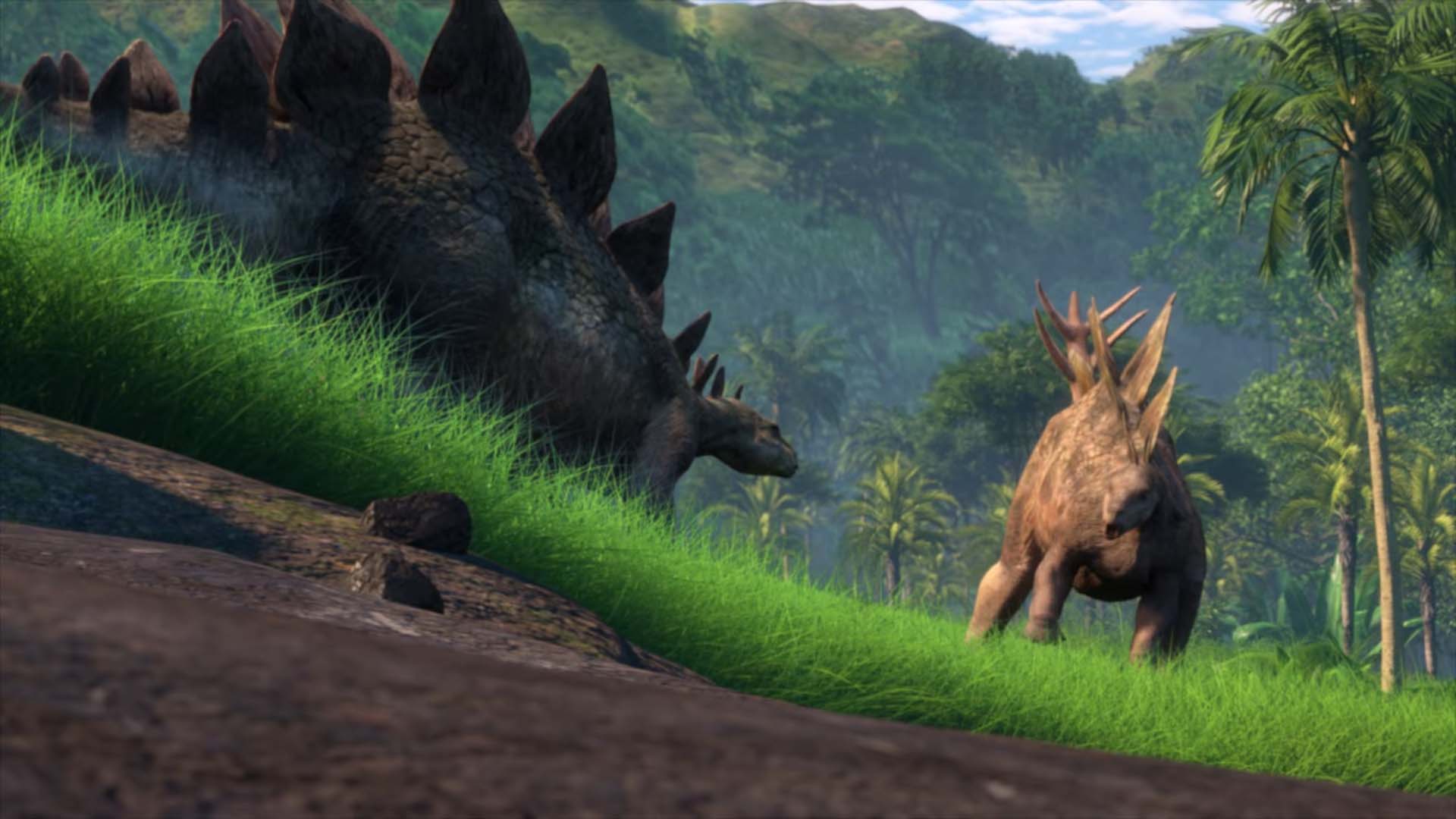
Originating out of the Bone Wars of the 1800s, Stegosaurus became popular after its official naming in 1877. Early on, those who discovered the bones believed that the plates on its back laid flat, like the shingles of a roof. However, they quickly realized that these plates stood upright on this creature’s back.
Since the Stegosaurus had a distinctive silhouette, it became a popular sight in multiple movies. So, the public began to easily identify this dinosaur. However, many of the older films, like the original King Kong, promoted this dinosaur as a dangerous, aggressive animal.
Despite the huge popularity of this dinosaur, the 1992 Jurassic Park film replaced the Stegosaurus scene with a Triceratops. However, the creature’s name briefly appeared on screen as Dennis Nedry stole embryo samples. Making up for its absence in the original film, the Stegosaurus made an enormous impact as Ian Malcolm arrived on the second island, Isla Sorna.
As Ian and his team located Sara Harding, they find her closely studying a young Stegosaurus. Since she was too close to the dinosaur, she triggered the adults to protectively lash out at her. By diving into a hollowed trunk, Sara barely escaped dying from impalement as the Stegosaurus slammed its tail spikes down.
This creature would continue to appear in Jurassic Park media, usually making brief cameos. Likewise, the Stegosaurus has briefly appeared for short scenes in the series.
Tyrannosaurus Rex
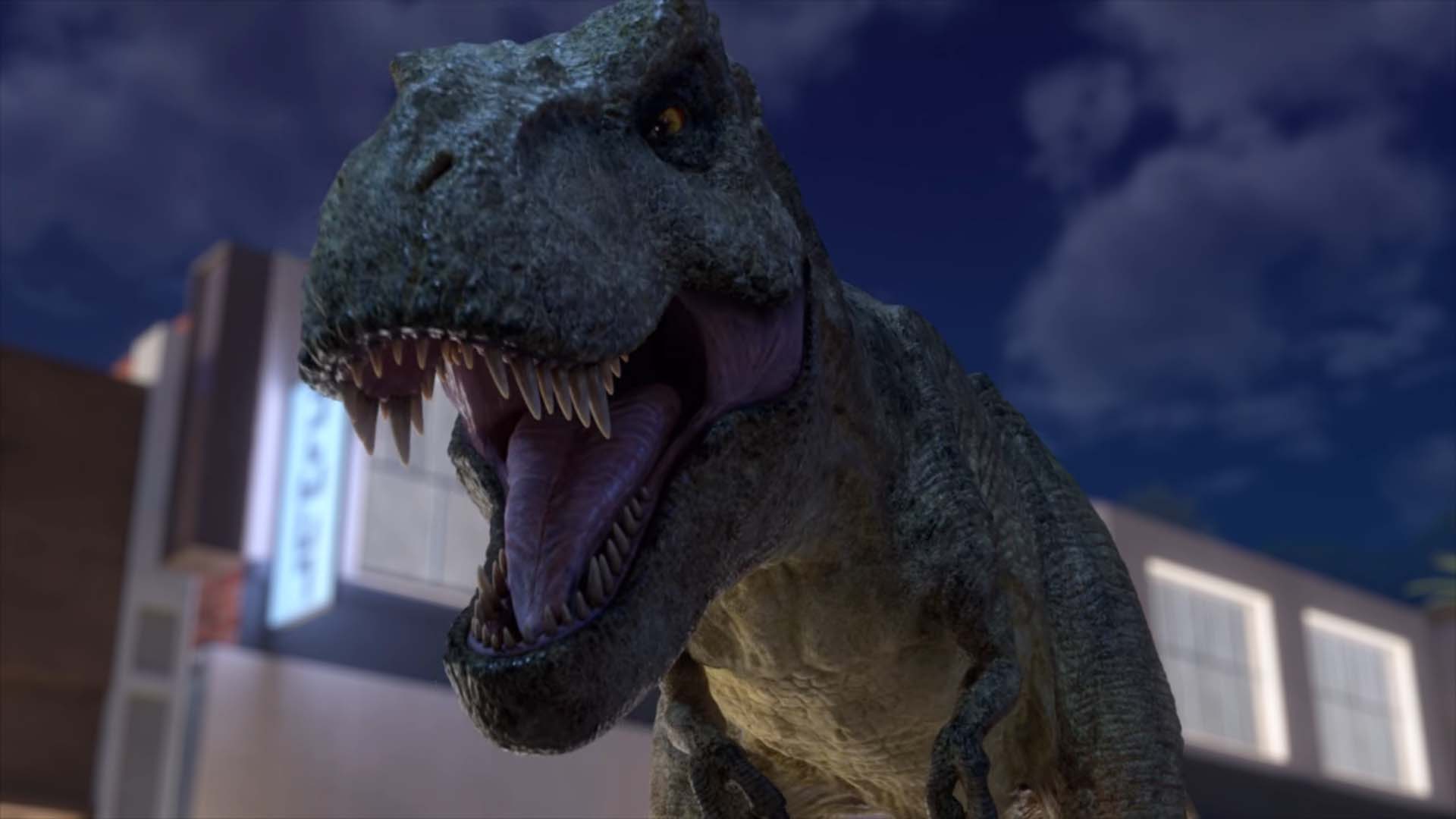
First identified in 1905, Tyrannosaurus Rex has gained a reputation as the king of the dinosaurs. Even though larger therapods have emerged over the decades, the popularity of the Tyrannosaurus Rex has remained strong. This dinosaur has one of the largest skulls available to carnivorous dinosaurs. However, it has diminutive two-fingered arms, which help distinguish the species.
Cemented the popularity of this species, the Tyrannosaurus has appeared in films for decades. Some of the earliest examples date back to King Kong, where a Tyrannosaurus battled the film’s namesake. As it appeared in so many films, the creature has become one of the most recognizable dinosaurs of all time.
Understanding the popularity of this species, Chip Kidd featured the Tyrannosaurus Rex skeleton on the Jurassic Park logo that he designed. Likewise, the first book and movie prominently featured this apex predator. In both versions, the trouble at the park started with the Tyrannosaur’s attack on the tour vehicles. After breaking out from her Paddock, the Rex terrorized Lex and Tim as she viciously attacked their vehicle.
As a mainstay of the franchise, the Tyrannosaurus Rex made several appearances in Camp Cretaceous. Not only does this dinosaur prominently appear for the opening splash-screen of each episode, but she has chased both the campers and their foes. After discovering that the Tyrannosaurus Rex made the main street market her home, Darius and Sammy lured Mitch and Tiff to Main Street, hoping the dinosaur would ruin their schemes. Later, this Rex also dined on the trapped Mitch.
Velociraptor
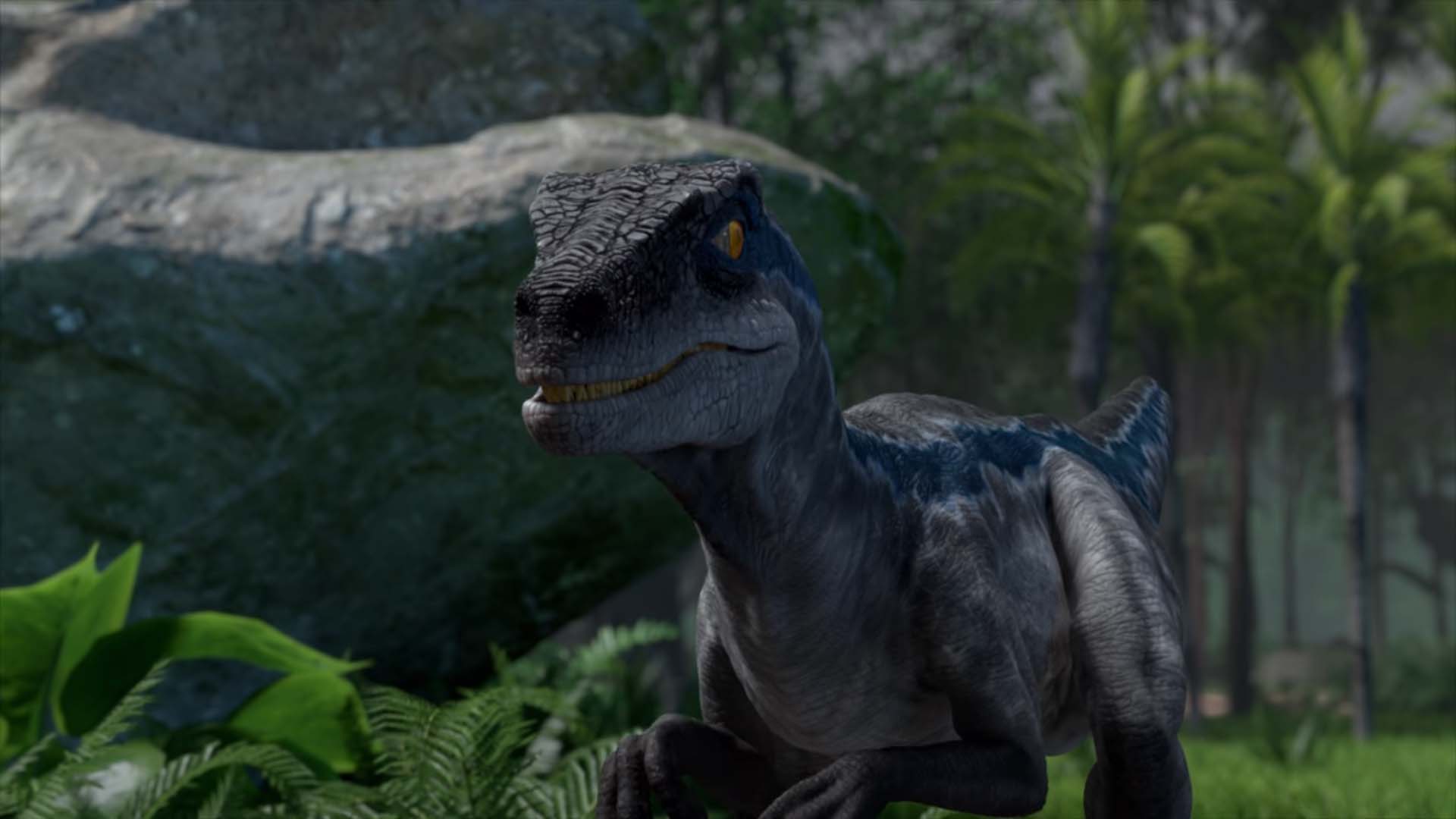
While the velociraptor first received its name in 1924, it remained in the shadow of its larger cousin, the Deinonychus for decades. Unlike their Jurassic Park counterparts, all Velociraptor stands at a diminutive height. On average, the tallest these creatures could grow was around half a meter, with around two meters in length.
In stark comparison, bones of another creature that strongly resembles Jurassic Park’s ferocious pack hunters began appearing around 1975. However, the original fossils gained little attention. Later, an expedition team in Grand County, Utah, noticed large foot-claws in 1991. After discovering the remains of this creature, the Utahraptor gained its official name in 1993, a year after Jurassic Park hit theaters.
Unlike real Velociraptors, Jurassic Park Velociraptors stand at around two meters tall, usually a bit taller than an average human. Even from the movie’s first scene, Alan Grant depicted these pack hunters as deadly and efficient hunters. His predictions proved true as the Velociraptors escaped from their containment unit. These dinosaurs quickly tracked down the survivors, terrorizing Lex and Tim at the visitor center.
Understanding the inherent intelligence of these creatures, Jurassic World began a new breeding program for Velociraptors. Believing they could be trained, they teamed a pack of four young raptors with an animal behaviorist, Owen Brady. Out of this group, Blue proved to be the most intelligent and closest to Owen.
Likewise, Blue met up with the campers as they struggled to survive on Isla Nublar. Even though she was now wild, she still displayed inclinations of following her training.
Which dinosaurs do you look forward to the most in Jurassic World: Camp Cretaceous?
With the new season of Jurassic World: Camp Cretaceous hitting Netflix today, December 3rd, the show will be introducing a new slate of dinosaurs. We already know that the Spinosaurus from Isla Sorna will be returning to the franchise. However, we would love to hear what dinosaurs excite you the most. Let us know in the comments below.
Do you have old and used Jurassic Park toys?
If you have a collection of old and used toys, you can turn those toys into cash. There is no reason to let those old toys collect dust. Contact us today to sell your Jurassic Park toy collection.